By Rick VanSickle
Where to begin with the new “Toussaint” release of Thomas Bachelder’s 2018 Chardonnays and Pinot Noirs being released online tomorrow (Nov. 1)?
I’m still trying to process our tasting yesterday over four hours at the Bachelder “Bat Cave” on the Beamsville Bench, but have little time to ponder what just happened with the release of seven wines Sunday.
Before we take on the wines being released — and, trust me, you don’t want to miss these wines — a few vignettes from the chaotic tasting Bachelder shared with Wines In Niagara and respected wine critic and author Tony Aspler.
Tasting in a COVID world
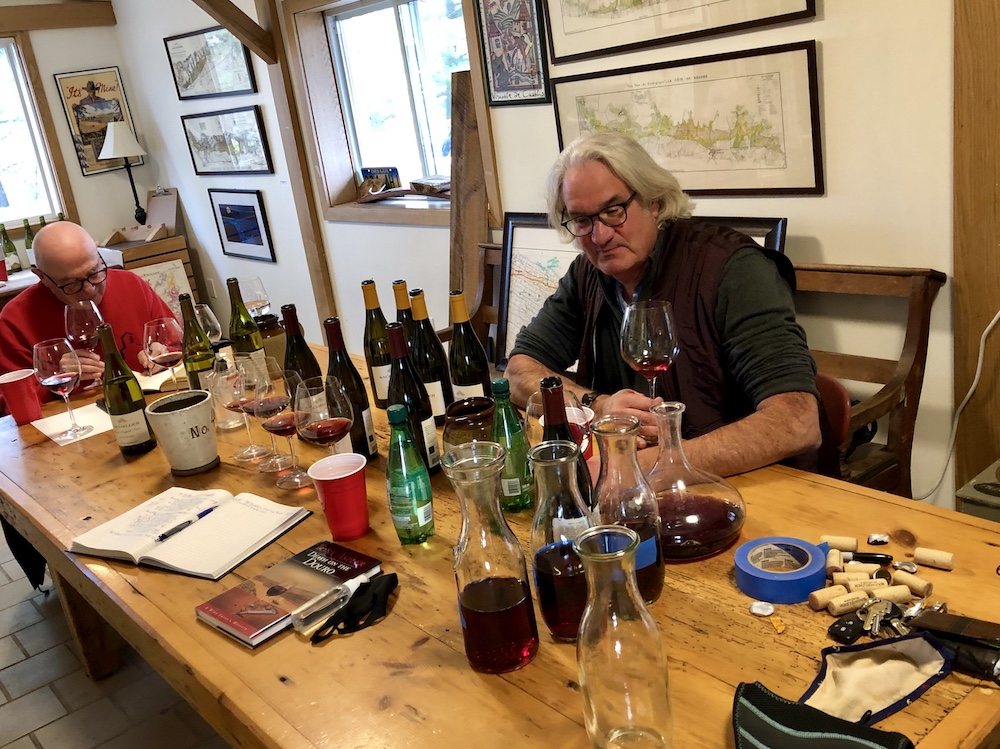
It’s tricky. It’s awkward. But it’s crucial that we all stay safe even when it seems like a perfectly safe environment to so. The virus is real and we all need to protect each other.
Tony and I arrived in separate vehicles. In normal times we would have shared a ride to Beamsville, but these aren’t normal times. Bachelder’s wife and business partner, Mary Delaney, had set up the long, wood table in the tasting room with plenty of room for three of us to sit safely distanced. We all were masked up until finally sitting in our seats and Bachelder started popping corks. There were no more than four of us at one time in the tasting room and we used minimal stemware (four glasses each) and poured our own wines after sanitizing our hands.
When we moved from the tasting room to the barrel cellar, we masked up and only removed them when tasting or eating.
Cuvee From the Heart
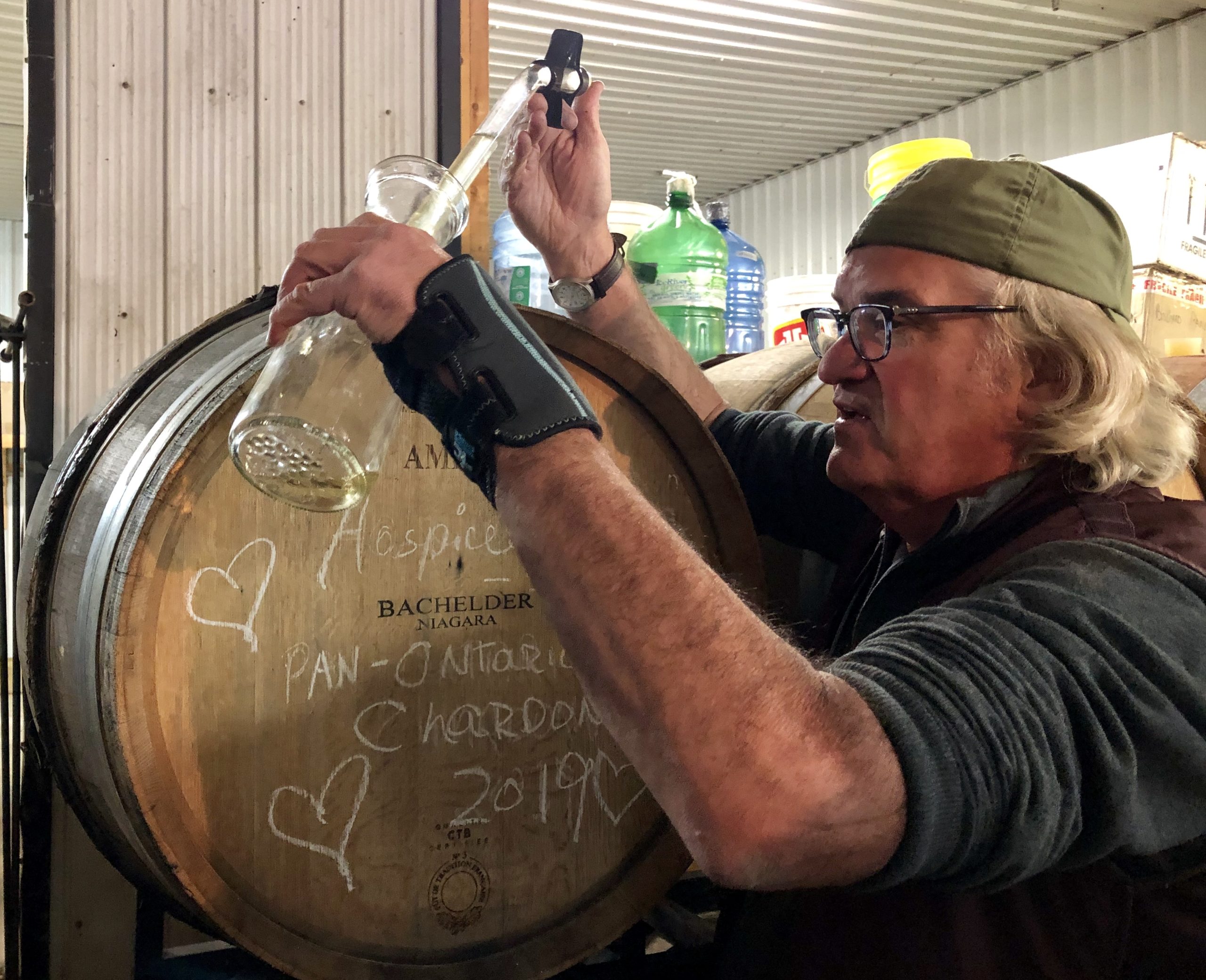
At a charity auction last month organized by Grapes For Humanity in support of the hospitality industry in Ontario, one of the most unique donations came from a collaborative effort from over 35 Ontario winemakers who donated a portion of their winery’s top Chardonnays and Pinot Noirs from the 2019 vintage to be created in a historic blend never before attempted locally. Bachelder was put in charge of the elevage and blending for the four unique barrels that were auctioned off in 25 separate lots. Two of the lots, which were purchased by Arron Barbarian, owner of
Toronto’s Barbarian’s Steak House, were full barrels of both Pinot Noir and Chardonnay. The other two barrels of wine are being blended and were sold as six-packs of magnums to 23 lucky bidders.
The idea for the so-called “Tête du Cuvée — From the Heart” was the brainchild of Steven Campbell (of Campbell ‘Kind’ Wines and founder of Lifford Wines and Spirits).
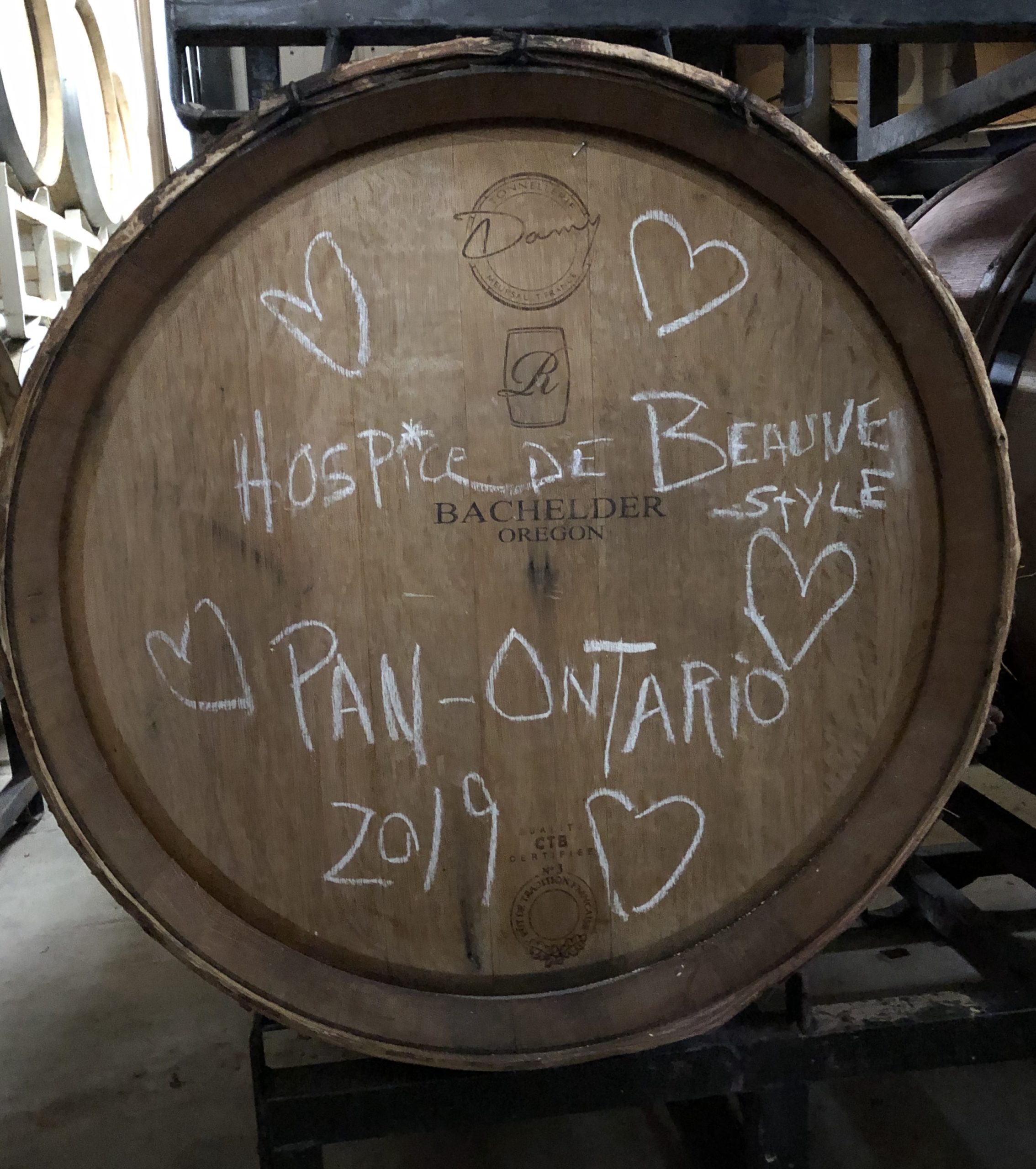
On this day, Bachelder gave us a first taste of these iconic and historic wines that are still aging in four barrels. Bachelder has yet to blend the final wines, a tricky proposition to find just the right combination of Chardonnay and Pinot from well over 35 different winemakers. We tried the wines separately from the four barrels then made our own blends from two different barrels and made our conclusions.
We have no idea what the final blend will be, but what we tasted was certainly delicious, truly pan-Ontario blends of high-end Chardonnay and Pinot Noirs. Barbarian is still figuring out his plan for the two barrels purchased, but knowing his history of charitable work don’t be surprised if this gift from Ontario winemakers continues to help others in need.
Putting Oregon, Burgundy
on the back burner
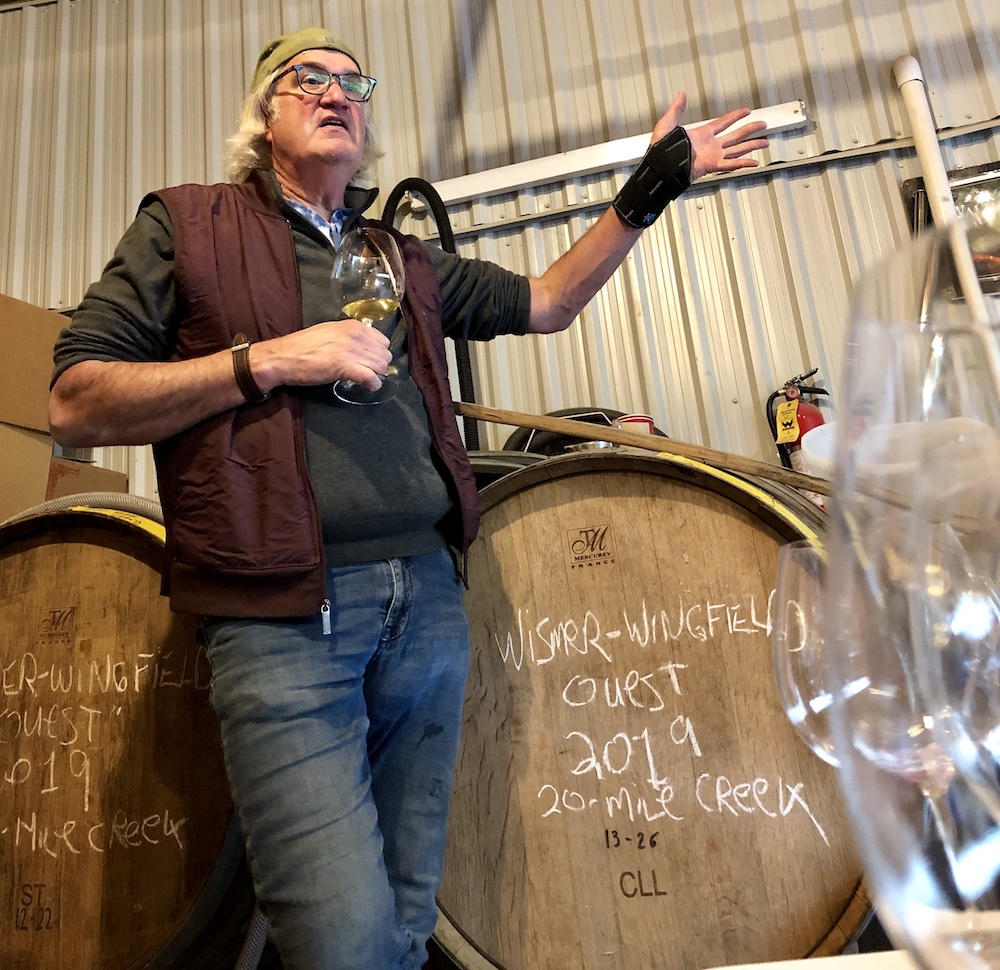
Thomas Bachelder built his namesake, previously virtual winery on the theme of making wines from three key terroir-driven regions specializing in Pinot Noirs and Chardonnays — Burgundy, Oregon and Niagara.
In an interview in 2017, Bachelder told Wines In Niagara that his attention was waning on the wines he was making in Burgundy and Oregon as his Niagara portfolio was stealing all the attention.
“I’m not saying I’m done in Burgundy and Oregon, but it’s so good here. Niagara is hitting at a time when cool climate wines are cool,” he said at the time.
Part of Bachelder’s questioning of what the future forecast had in store for him was his experiences travelling the world and pouring his wines. He always brought a representation of what he makes — Burgundy, Oregon and Niagara Chardonnays and Pinot Noirs from regional blends to his more vineyard-specific bottlings at the top end.
“Everywhere I go people want the Ontario wine,” he said. “Maybe (and this is a big maybe) I should downsize the Burgundies and Oregons and upsize Niagara.”
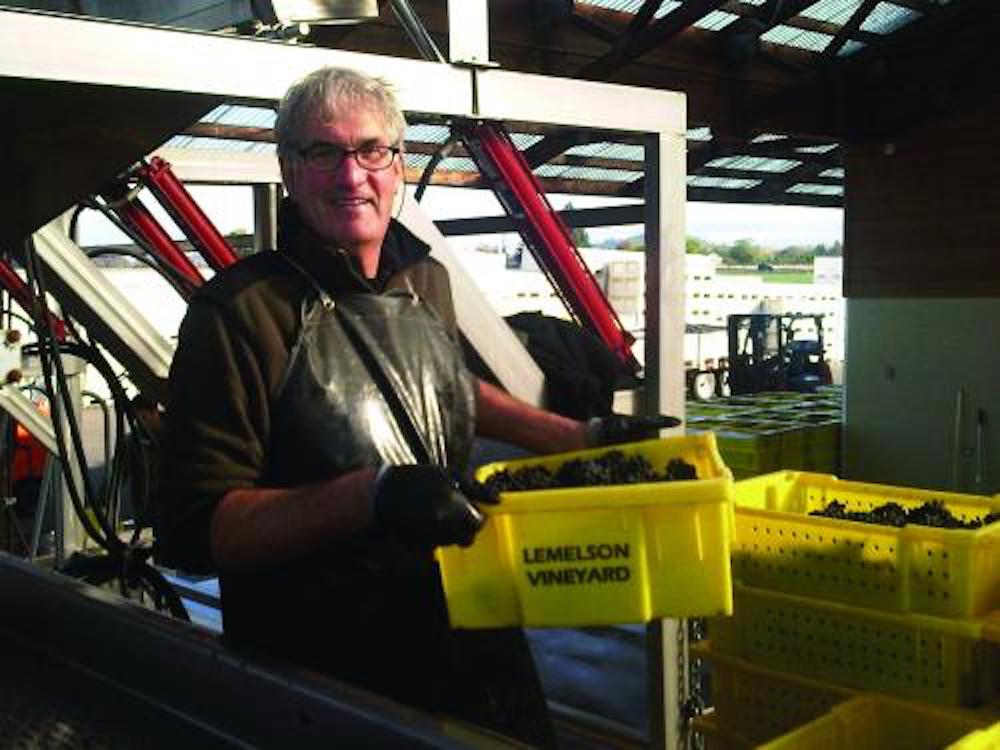
In fact, Bachelder confessed during our most recent tasting yesterday, that he has, for now, abandoned both Burgundy and Oregon. The last wines made from either of those regions were from the 2015 vintage.
The undeniable truth that Bachelder wrestled with in his tri-region portfolio was this: He can make the best of the best wines from the finest terroirs in Niagara but he cannot replicate that in either Burgundy or Oregon, they will always be the weaker sisters in the portfolio.
It helps a lot that he and Delaney now have a retail location to sell wines directly to consumers online, so it made sense to ramp up the Niagara portfolio and put the other regions on hold for the “foreseeable future.”
Wines made with intention
Bachelder makes wines from local terroirs using wild (indigenous) yeasts and uses organic vineyards wherever possible. Everything goes to barrel for long ageing.
“The intent is to make pure, suavely-textured wines that sing lightly and clearly of their vineyard origins with as little makeup as possible – wines that are finely-perfumed and tightly-wound, offering the classic refined fruit and textured minerality of the delicate silt, clay and dolomitic limestone-laced ancient lakebed terroirs of Niagara.”
Bachelder wine FAQs
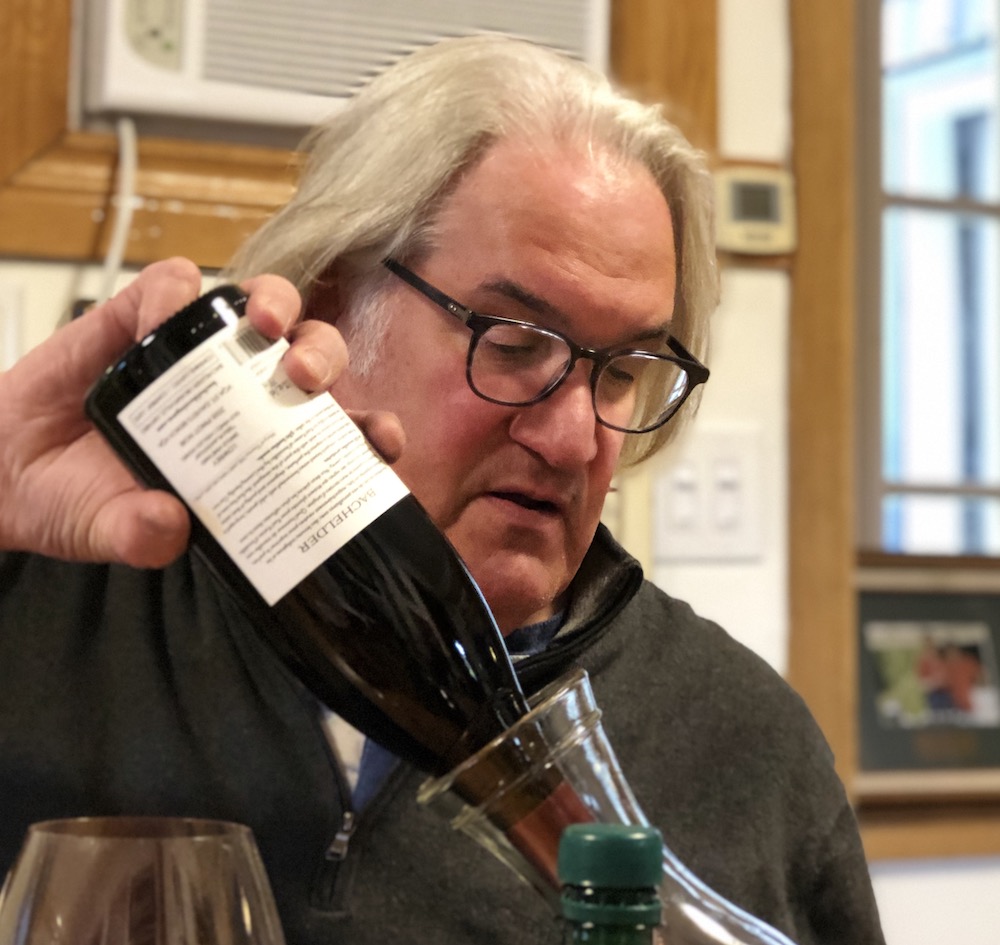
When are your releases?
We will release wines twice each year: Nov. 1 and April 2. Wines will be available for a limited time or until they sell out. Sign up to our email list to be notified when sales start to ensure you don’t miss your chance to purchase.
Do you offer tastings?
Tastings are by appointment, and only for mailing list members. You can submit a request here.
Can I visit the winery?
At this time, we are not open for drop-in retail sales.
Where can I buy your wines?
You can buy our wines online, and at the LCBO and SAQ.
Where is your winery?
We are located on the Beamsville Bench, but we make our wines from hand-selected vineyards across Niagara.
How I order wines?
Go here on Nov.1 for the new release
The “Toussaint Release”
On Sunday, Nov. 1, the fall release of new Bachelder wines is available online. Tony Aspler and I sat down with Bachelder over four chaotic hours to taste the new releases. There are some stunning wines in this release, some historically important wines that discerning wine lovers need in their cellars that show what Niagara winemakers can do when sourcing fruit from top terroir-driven vineyards on both the Bench and Niagara-on-the-Lake.
Let’s define chaos, shall we?
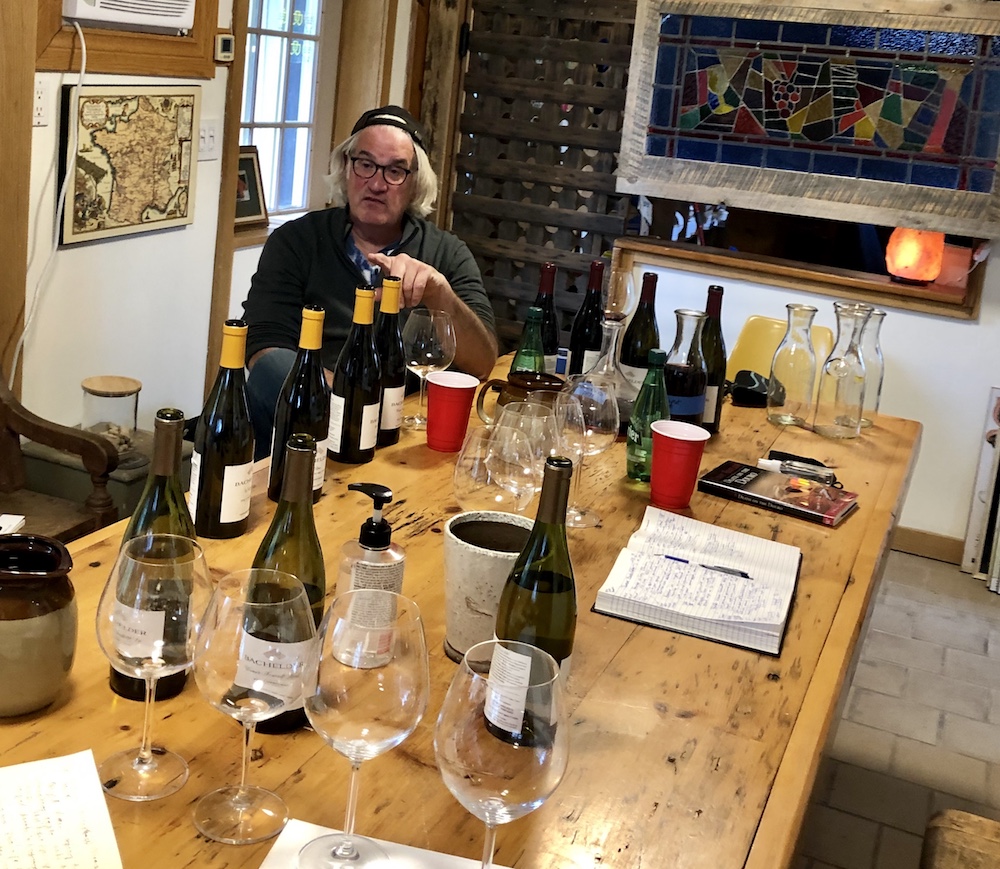
cha·ot·ic
adjective
in a state of complete confusion and disorder.
“a chaotic jumble of spools, tapes, and books”
Let’s apply chaotic to a tasting with Thomas Bachelder and change the example from the Oxford dictionary to this: “A chaotic jumble of bottles, decanters, explanations and order.”
That perfectly defines a tasting with Bachelder; it’s an orderly exercise of chaos with purpose. He changes tasting orders on what would seem to be a whim, yet makes perfect sense to him. He challenges you to define that which can’t be defined. He flits from thought to thought in a weirdly connected way to make his point. At any given time you are lost and buried in notes that look like gibberish to anyone else but yourself. You can’t take photos with any sort of order because Bachelder is constantly moving bottles and changing the order of the tasting. Then he goes off for periods of time pulling out library wines to compare to wines you have already tasted an hour before.
That chaos, that beautiful kind of chaos, the kind of chaos that makes you smile and appreciate the passion from where it’s coming from — the heart — makes tasting with Bachelder both a challenge and a blessing.
So, here it is, the new releases in review:
The Chardonnays
(Reviewed in the order that they were tasted)
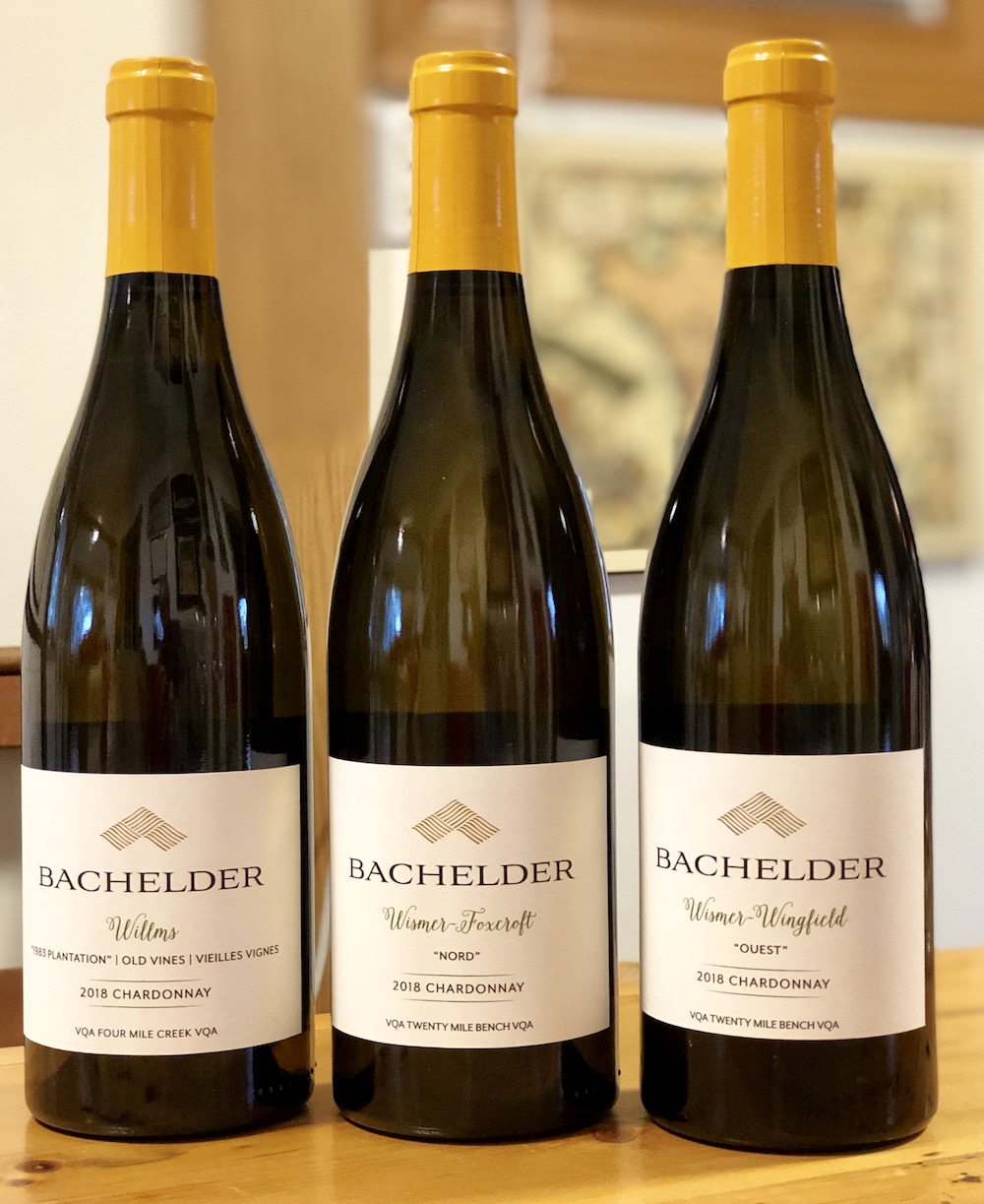
Bachelder Willms 1983 Plantation Chardonnay 2018 ($45, 92 points) — This is the second vintage for Bachelder’s foray into Niagara-on-the-Lake in his broadening quest for terroir-driven wines. The Willms Vineyard is situated in the Four Mile Creek sub-appellation with the Chardonnay vines planted in 1983. It is uniquely located between two bodies of water, some 6 km from the Lake Ontario, and about 4 km from the Niagara River. It is a combo of silt, loamy-clay, gravel, limestone and sand. Only used oak barrels were employed for aging the wine. The nose is immediate and expressive with lovely apple tart, peach, toasted almond, vanilla, ripe pear and spice. It has some flesh on the bones on the palate, but nothing over the top, with pure flavours of ripe Niagara orchard fruits, persistence, length, toasted spice notes and a citrusy finesse on the finish. Quite attractive out of the gate, but will gain complexity and weight with a few years in the cellar.
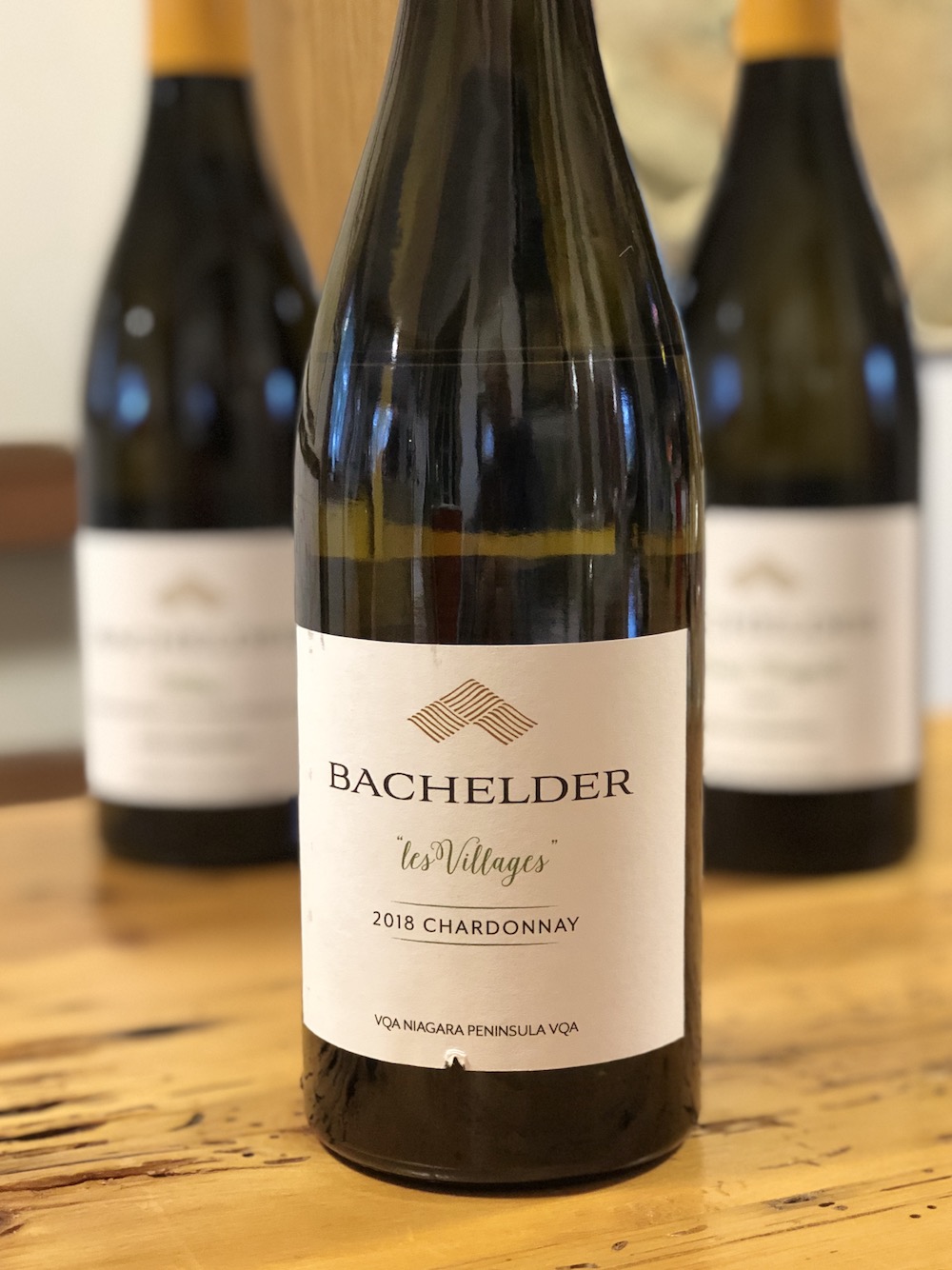
Bachelder Les Villages 2018 ($35, not part of release, previously released last spring, 91 points) — The Villages is the only Chardonnay in the lineup that sees new oak aging with 20% of the fruit directed to new barrels. The blend is culled from a combination of Willms, Wismer-Foxcroft and Wismer-Wingfield vineyard fruit. You can smell and taste a little bit of each vineyard in this friendly blend that offers terrific value for such a well-made wine. The nose is quite rich and expressive with ripe pear, baked apple, lemon toast and toasted vanilla bean accents. It shows a rich texture on the palate with vivid pear/apple/quince fruits, citrus zest, vanilla, spice and a lovely mineral edge on a clean and zippy finish. Good drinking right now, but can age a couple of years or more.
Bachelder Wismer-Foxcroft Nord Chardonnay 2018 ($48, 93 points) — Bachelder has been a champion of the Wismer Vineyard on the Twenty Mile Bench and he believes he has figured out where the best parcels and blocks are located for the kind of terror-driven wines he wants to create. At 5.4 km from the lake, at an altitude of 110 metres, Wismer-Foxcroft is a steep, stony-silty and limestone vineyard with a beautiful view of Lake Ontario. The Foxcroft ‘Nord’ parcel can be found on the west side of Victoria Street in Vineland, just 1,000 metres downslope from its sister, the Wingfield parcel. This particular block was planted in 1993. It has a highly perfumed nose of pear, nougat, apple skin, defined oyster shells and salinity with underlying, not defining, oak spice notes. There is a subtle yet intriguing reductive/match stick note on the palate with a rich vein of minerality, quince, lemon/citrus, integrated elegant spice notes with length and finesse through a crisp finish. Such a beautiful wine that will benefit from 5+ years in the cellar. Bachelder pulled some 2016 Chardonnays, a warmer vintage for sure, to show how they can evolve. The Wismer-Foxcroft bottling has gained some lovely textural notes and more expressive fruit and mineral notes. It really points to the benefits of laying wines down, at least for two or three years to let the wine settle into it own skin.
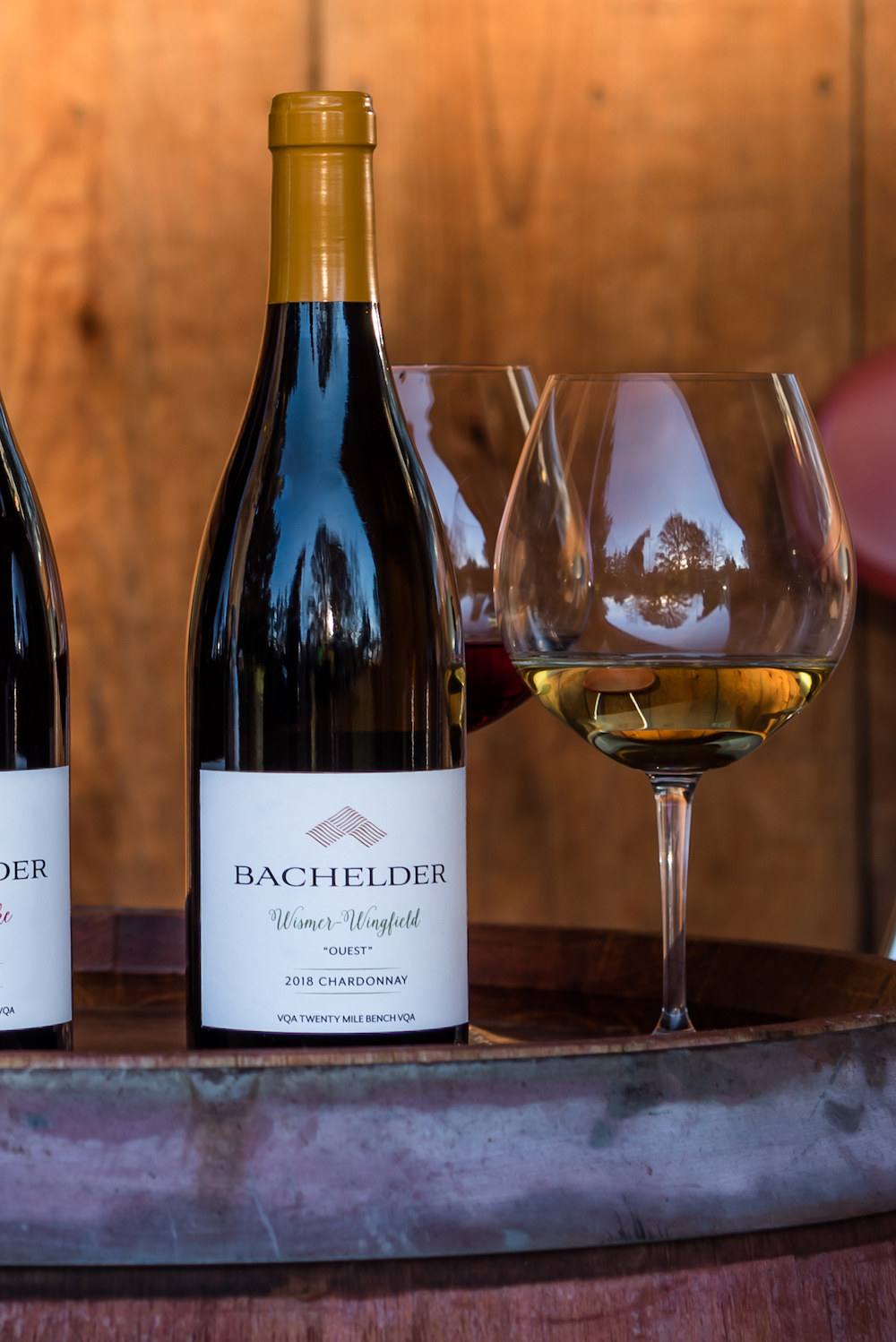
Bachelder Wismer-Wingfield Ouest Chardonnay 2018 ($48, 94 points) — In the pantheon of potential “grand cru” vineyards in Niagara, Wismer-Wingfield, mined for its liquid gold from some of Niagara’s most terroir-focused winemakers led by Bachelder, this would be among the first named to such a controversial accolade. The vineyard is located 6.8 km from Lake Ontario at an altitude of 160 metres. The Wingfield parcel has always shown profound, singular terroir on a perfectly exposed, well-drained slope on the east side of Victoria Street in Vineland. Both the highest elevation and furthest from the lake for all of Bachelder’s sourced parcels (50 metres in altitude and 1,000 metres further from the Lake than other Wismer parcels), Wingfield is picked 10 days to two weeks after other Chardonnay vineyards. The vines are now nearly 30 years old, planted in 1993 on lighter silty/clay and dolomitic limestone soil, it shows the classic Vineland (as distinct from Jordan) combination, of what Bachelder calls “plush richness and tight minerality.” The Wismer-Wingfield block has always been sourced from the western part of the parcel, which makes for a long hang-time and “an intense, rich, noble flavour, overlaid by a tight, long minerality.” It has been named (more than once) as Wines In Niagara’s Most Thrilling Wine of the Year and consistently scores 93+ points and is yet again the superstar in the 2018 Bachelder lineup. Go ahead and compare this to Puligny-Montrachet, or better yet, taste both side by side and make your own call. It has such a complex, if not just a tad tight right now, nose of saline/flinty minerality, a floral note of elderflower, ripe pear, lemon, cream, bin apple, vanilla toast, sweet oak spices and encased in pure elegance that will take patience to fully reveal itself. Such power, grace and complexity on the palate with pure pear and bin apple fruits, lemon zest, layers of saline minerality and flinty nuances with subtle biscuit-y notes, elegant vanilla toast and spice with fresh, lifted finesse through a long, long finish. Tight, yes, but wait for this to fully reveal itself. I sense another blockbuster that Chardonistas crave. Cellar 5+ years, but try at least one of them now so you can watch the evolution.
The Pinot Noirs
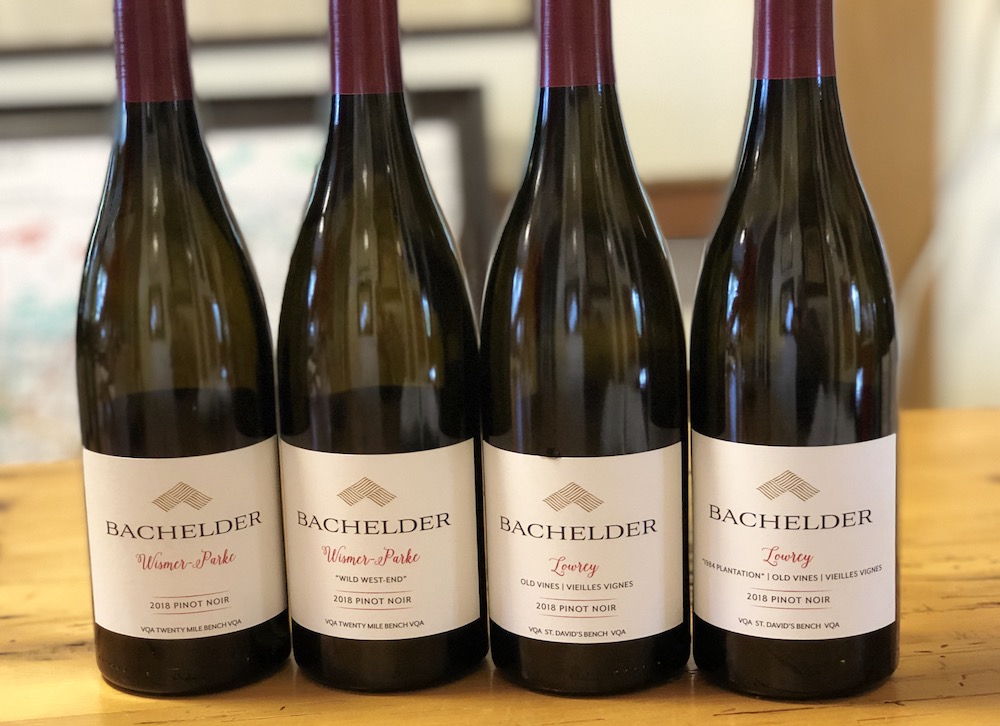
Bachelder Wismer-Parke Pinot Noir 2018 ($48, 92 points) — “Wismer-Parke makes wines with a wild, iron-tinged nuance, yet a pretty, savoury mouthfeel,” says Bachelder. Why? At a distance of 5.4 km from Lake Ontario, at an altitude of 110 metres, it hails from the sweet spot on the Twenty Mile Bench on reddish magnesium and dolomitic-limestone clay soils with a solid silt component. The vines were planted in 1999 to 115 and 667 Pinot Noir clones on 3309 rootstock in reddish magnesium oxide-rich, silty/clay and limestone soil. This Pinot is planted just south of Highway 8 on the Bench, on a well-drained slope on the east side of Victoria Street in Vineland. This has a pretty nose with a floral entry that leads to raspberry bramble, cranberries and cherries with subtle spice and an interesting vein of meaty, a rusty-nail (iron? bloody?) nuance that offers complexity and will spur provocative discussion among Pinotphiles. It’s gorgeous on the palate with meaty/savoury notes, crushed red berries, perfumed spice notes, subtle cassis with a silkly smooth delivery through a finessed finish. Cellar 5+ years.
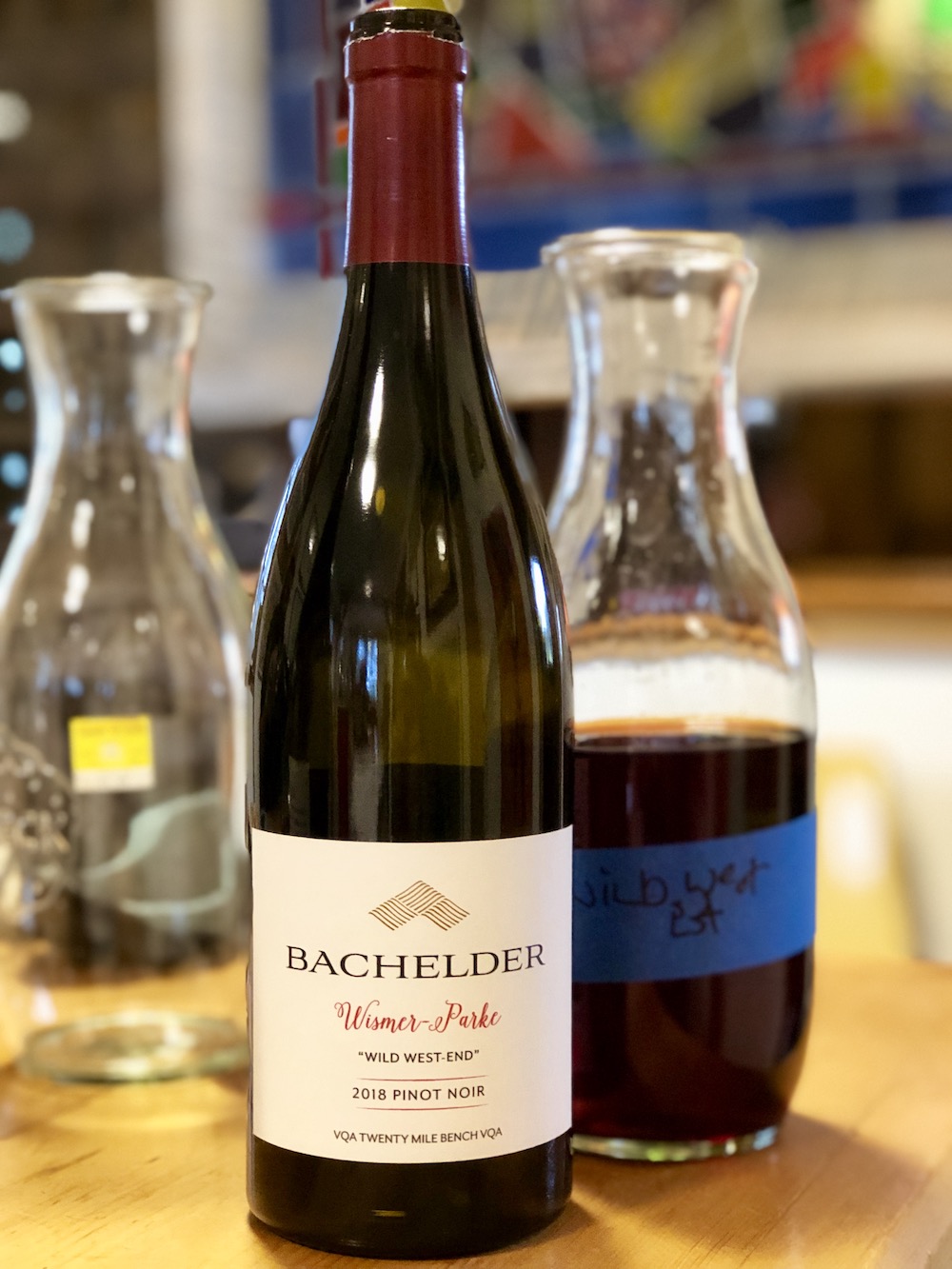
Bachelder Wismer-Parke Wild West End Pinot Noir 2018 ($55, 93 points) — Just 50 metres from the classic centre of the Wismer-Parke Vineyard, there is a little north-western oriented slope planted to a mystery clone that makes “even crazier-concentrated, iron-tinged wines with a rusty, rustic tone,” says Bachelder. At a distance of 5.5 km from Lake Ontario, at an altitude of 110 metres and adjacent to Wismer-Parke proper, it too, hails from the sweet spot of the Twenty Mile Bench on reddish magnesium and dolomitic-limestone clay soils with a solid silt component. Only 600 bottles are on offer. This has a more complex and rustic nose of meaty/savoury red berries, earth, funk and even more evident iron-laced nuances and barrel spice noes. It has a complex array of brambly red berries, subtle cassis and licorice notes with a silky mouth feel, elegant oak spice notes, iron accents and a long, finessed finish. Cellar 7+ years. “It is Wild and it is West, and it is named for an evocative Dire Straits song that was important in my musical development,” says Bachelder. Pair with this song …
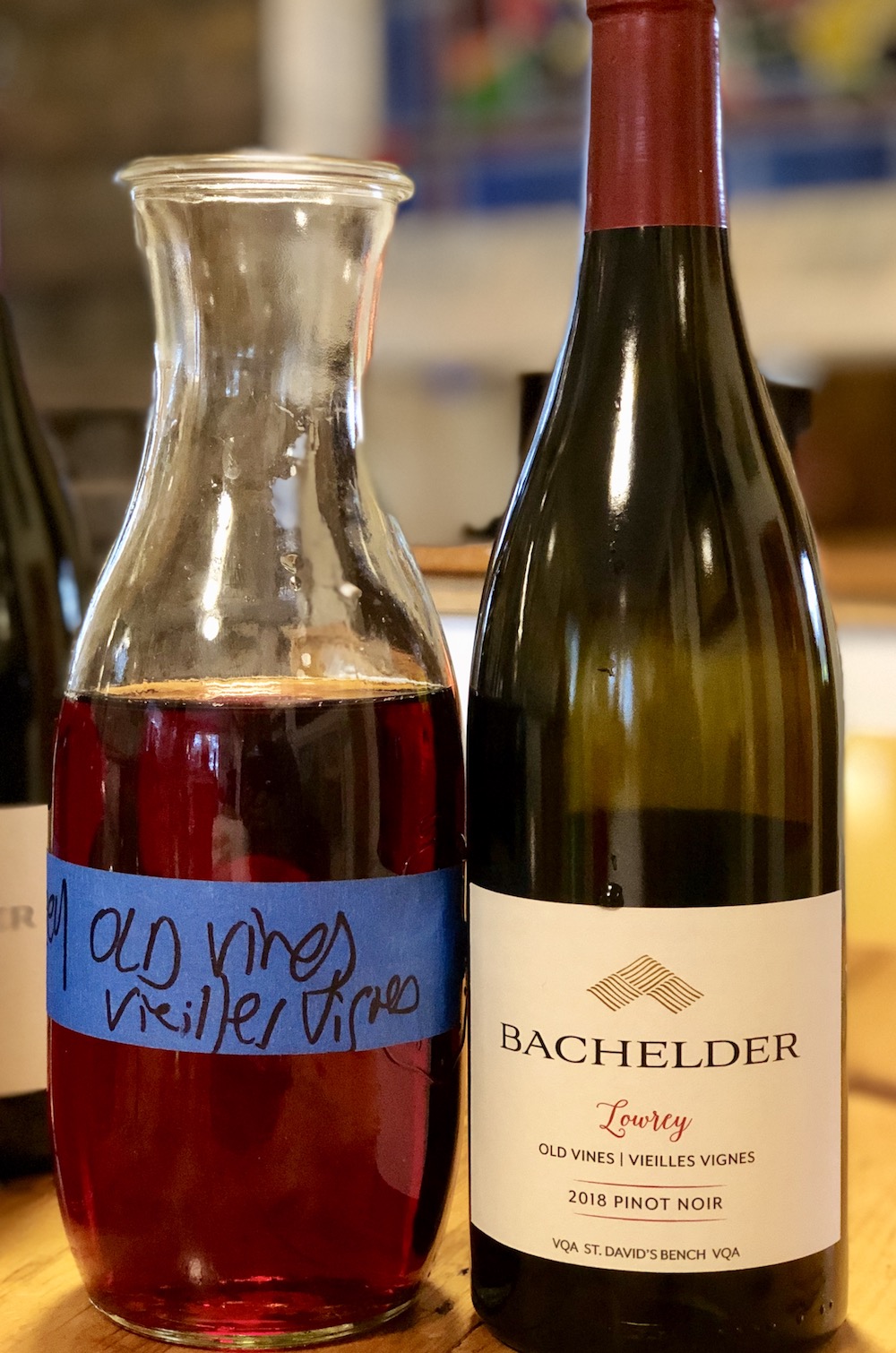
Bachelder Lowrey Vineyard Old Vines Pinot Noir 2018 ($48, 93 points) — Bachelder calls it “an honour” to work with Lowrey Vineyard fruit from 1988 and 1993 vines planted and owned by the Lowrey family of Five Rows Craft Wine” fame. They put in the first five rows in 1984 for Karl Kaiser of Inniskillin, who saw similarities between the aspect of Lowrey and other vineyards he was familiar with in Burgundy. A mere 5 km from the Niagara River, and under its considerable influence, the Lowrey vineyard, located on the St. David’s Bench, has complex soil variability and limestone content (due to both its glacial heritage, and the fact that the river actually used to run through the property many eons ago). The block benefits from the air movement, which cools it in summer and also minimizes winterkill of dormant buds. The rows slope gently from south to north, and the soil is a combination of clay and loam, sitting on a limestone base layer. The block has aged gracefully over the last 30 years, and seemingly adds new layers of complexity to its wines with each passing vintage. This is the prettiest vintage that I have tasted from the Lowrey, with a nose of fresh raspberries, dark cherries, undergrowth, rose petals, cranberries and elegant barrel spice notes. It’s light on its feet on the palate but has some dense and concentrated red berries and anise with good length, texture and balance through a bright and spicy finish. Cellar 5+ years.
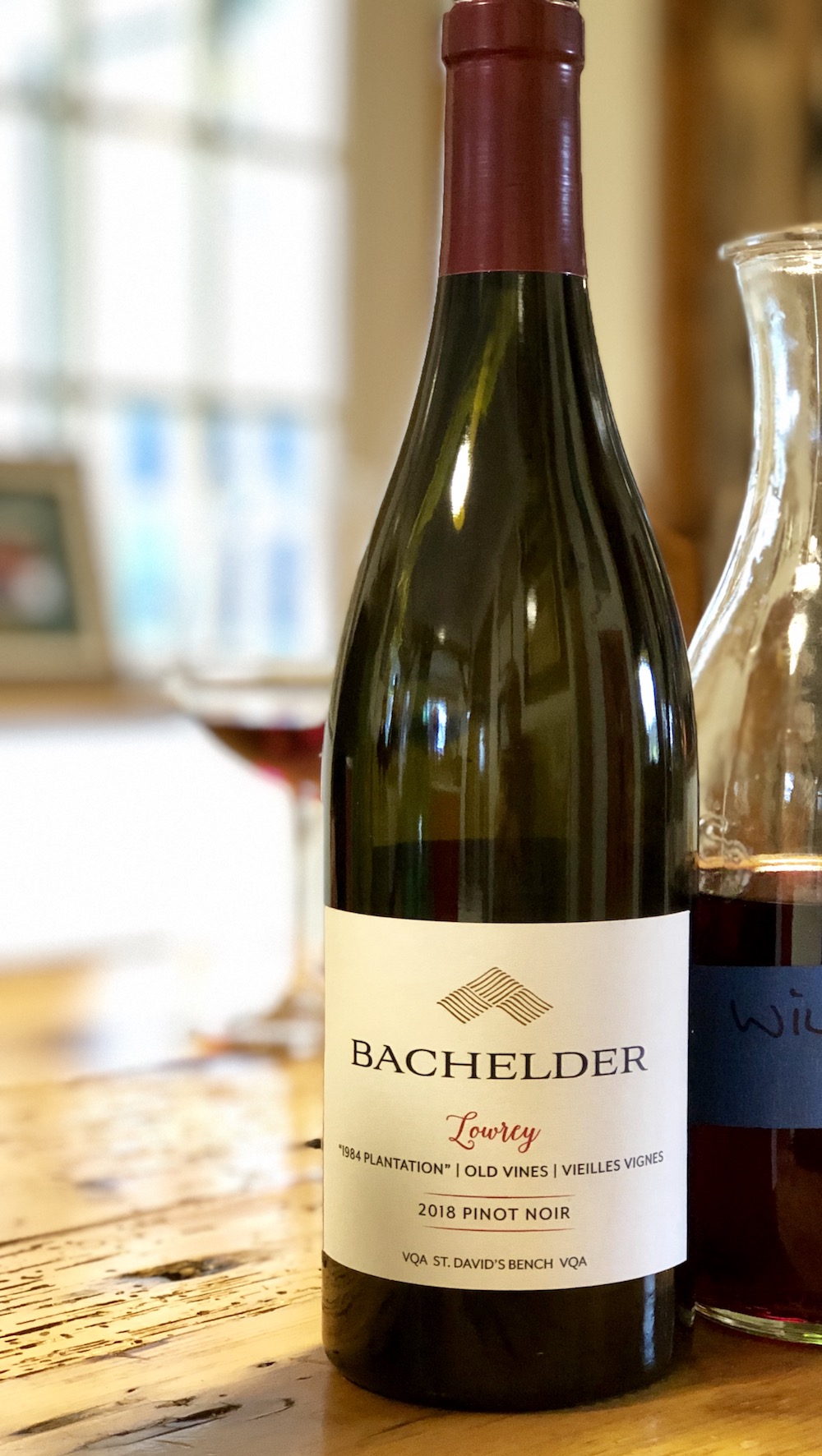
Bachelder Lowrey Vineyard 1984 Plantation Pinot Noir 2018 ($65, 95 points) — From the Eastern parcel of the Lowrey Vineyard and the original and oldest vines, planted in 1984. The old-vine Pinot Noir is planted on a specific two-acre site on the 60-acre property and is on a gentle slope at the foot of the escarpment. Bachelder made two barrels of this wine this vintage (588 bottles), double what he made last year from his first “original” Lowrey Vineyard planting. This is shockingly good, a classic benchmark Pinot for Niagara. Lowrey always offers that classic trait: An iron fist in a velvet glove, a term often used in Burgundy but holds true with the Pinots from the Lowrey Vineyard — like a ballerina with great core strength. The word “Volnay” is bandied about when discussing this Pinot; but perhaps more crudely (cover your ears, mom!), holy shit comes to mind. This has a richly perfumed nose of fresh raspberries, bramble, violets, cranberries, cherries, elegant spices and chalky minerality with meaty/savoury notes subtly adding complexity. It is prettier on the palate, so elegant and velvety, with dense red berries, anise, spicy nuances, layers of minerality, complexity and verve that course through the racy finish in wave after wave of heart-pounding intensity. Says Bachelder about this special wine: “When to drink this wine? When does one dare? It is liquid history. Grab a few, try one on a special night and hold the rest like a miser. Resist sharing. Do nothing else the night you finally pop a bottle. At first glance, it seems perhaps lighter than the Lowrey Vielles Vignes but the inverse is true: it is ultimately more regal, firmer, grander. Winemakers are but spectators before terroirs like these.” This will improve for 10+ years and we will be talking about it long after that.


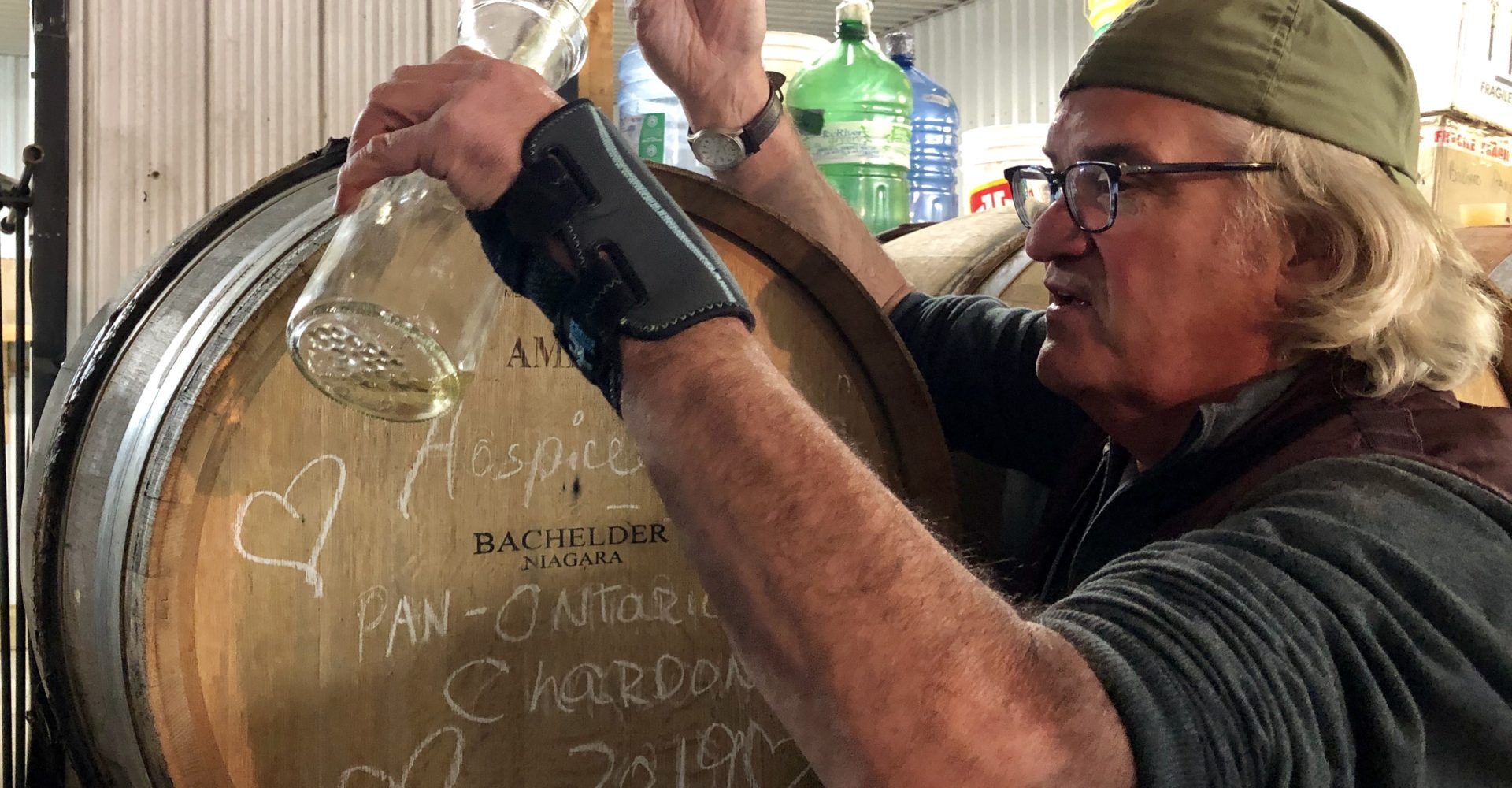






I would like to visit your winery for a taste test and purchase some of your wines
You’ve contacted Wines In Niagara, not Bachelder. Please contact thsm here https://bachelderniagara.com/